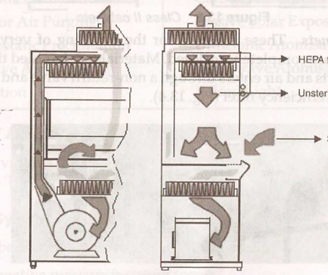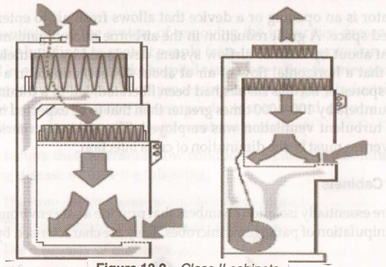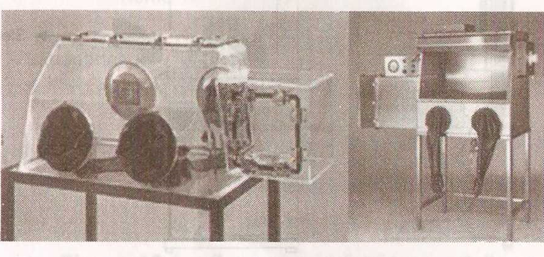AIR SANITATION
·
Air sanitation is a process of control of
microorganisms in air.
·
Air sanitation is the system of removing the
impurities present in air inside buildings to protect people from infections.
·
Sanitation of air is essential in enclosed
places like
ü Hospital wards
ü Operation theatres
ü Burns unit
to prevent infection
ü Food processing
and packaging industries
ü Rooms where
sterile materials or products are stored require aseptic atmosphere.
DEVICES USED
FOR AIR SANITATION
1) Ventilation
·
Ventilator is an opening or a device that
allows fresh air to enter into an enclosed space.
· A great
reduction in the airborne microorganisms can be brought about by laminar
airflow system developed by Whitfield.
· It was found
that a horizontal flow of air at about 40 feet/minute in a room in which spores
of Bacillus subtilis had been liberated, led to a diminution in their
numbers by 100—1000 times greater than that to be expected in a room where
turbulent ventilation was employed.
·
The ultimate criterion of its effectiveness
must be the diminution of cross infection.
2) Safety
Cabinets
· Safety
Cabinets are essentially isolation chambers that provide a safe environment for
the manipulation of pathogenic microbes.
·
Safety Cabinets are characterized by having
considerable negative pressure air flow that provides protection from
infectious bio-aerosols generated within the cabinets.
· Safety
Cabinets are of three classes.
Class I Exhaust protection cabinets
They protect the operator by maintaining a rapidly moving stream of air, which entrains infectious particles and deposits them on a high efficiency filter. The air is then discharged outside the building.
These are open-fronted and are designed to protect the material that is being handled from extraneous contamination. It is suitable for most work with moderate pathogens. They do not protect the operator, though they can be modified to do so.
Class III cabinets
These are used for the handling of very
dangerous materials and are completely enclosed. Materials are handled through
gastight glove ports and air enters through a non-return valve and is extracted
through a high-efficiency filter.
AIR SANITATION
METHODS
1)
Filtration of Microorganisms
·
High Efficiency Particulate Air Filter (HEPA)
filter will filter micron sized particles at about 95 % efficiency.
· HEPA filters
are Box type filters or Bag type filters.
a) Box or Pleated
type HEPA filters can be as thin as 2 - 4 inches, or as wide as 8 - 12 inches.
b) Bag type
HEPA filter, which can extend upto 24 inches.
· Bag type
filters typically have a lower pressure drop than the Box type HEPA and are
more efficient.
· HEPA filters
are typically rated as 99.97 % effective in removing dust and particulate
matter.
· HEPA filters
have effective pore sizes of 0.3 µm, small enough to capture Bacterial cells,
Endospores and many viruses, as air passes through these filters, nearly
sterilizing the air on the other side of the filter.
·
HEPA filters are commonly found in Hospital
isolation rooms, Operating theatres, Pharmaceutical manufacturing units and
Industrial clean rooms.
2)
Ultraviolet Germicidal Irradiation (UVGI)
·
Microbes are uniquely vulnerable to the effects
of light at wavelengths at or near 260 nm due to the resonance of this
wavelength with molecular structures.
· Ultraviolet light
possesses just the right amount of energy to break organic molecular bonds.
This bond breakage translates into cellular or genetic damage for microorganisms.
The same damage occurs to humans, but is limited to the skin and eyes.
·
Viruses are especially susceptible to UVGI
more than bacteria.
3)
Fumigation with Disinfectants
·
Fumigation is an effective form of
disinfection, as gas can spread rapidly within the space to be disinfected, and
all the hidden corners and blocked surfaces.
· The disinfectant
is vapourized (by heating or boiling) into fine droplets using a
fogger and blown into the air. Upon settling down, these droplets reveal
their effect.
· Formaldehyde
fumigation has long been an accepted method for areas where microbiological cleanliness
is required.
·
Vaporized Hydrogen peroxide is a dry gaseous
method that has been used as a reliable alternative for Formaldehyde.



Comments
Post a Comment